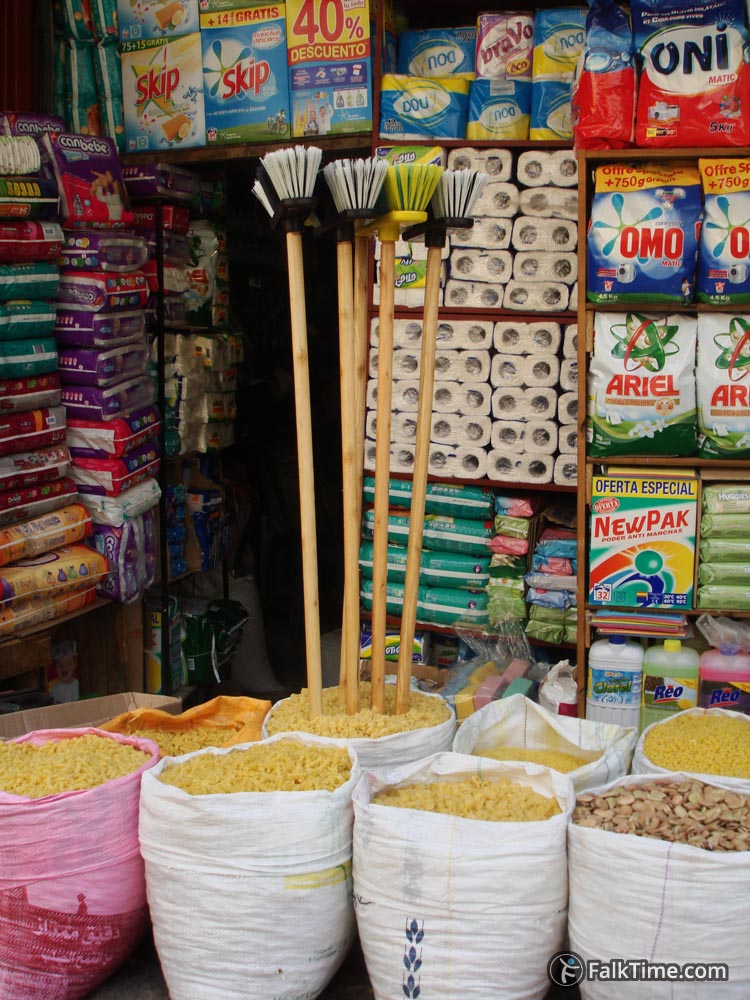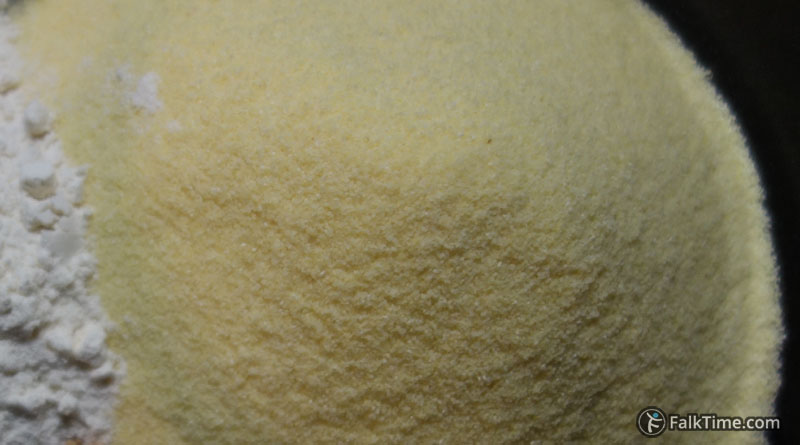Cereals and pasta in Morocco
Couscous
Couscous is made of durum wheat semolina. Semolina is sprinkled with water and then some flour or dry semolina is added. Everything is mixed up and after that – sifted. All the pellets that couldn’t go through a sieve are couscous. Now one only needs to dry it. Usually the diameter of pellets is ~1-2 mm. Northern Moroccans prefer more fine pellets while southern Moroccans like coarse couscous.
The right couscous should be cooked in a special steamer – a couscoussier. Before steaming one needs to moisten the pellets. Also one needs to moisten (or add some oil to) couscous 2-3 times during steaming. The result of boiling can disappoint you: couscous will have a consistency of a porridge.

Couscous is one of the most favorite cereals in Morocco. It is served everywhere and for any occasion – for a dinner, a supper or a wedding. Couscous can play a role of side dish or be the dish itself. You may taste following variations in Morocco:
- With vegetables (carrots, onions, tomatoes, turnips, bell peppers, pumpkin, courgettes etc);
- Sweet one with dried fruits;
- With fish (especially popular in seaside settlements);
- With lamb (or any other meat) and vegetables.
According to Moroccan traditions couscous is eaten with hands. (In Muslim countries one should use only right hand for this purpose). One should roll couscous in a ball with fingertips, this way it would be easier to put it in the mouth.
Rice
Rice is not so common in Morocco. It is also cooked in a steamer. Rice is used:
- For stuffing poultry;
- For preparing rice puddings;
- As one of ingredients of pastilla pie filling (seldom);
- As a side dish.
Pasta
One of the most popular pasta in Morocco is chaariya (or angel’s hair). It is short and very thin vermicelli (spaghetti). While cooking it can be steamed or put in a soup.

Semolina
Semolina is a fine groat made of durum wheat. In Morocco it is used for a couscous, for a bread or pancake dough or for a porridge. There are 2 types of semolina porridge:
- Assida is made of medium ground semolina. Porridge is cooked with a pinch of salt and served with honey and butter. When it is warm, one should use a spoon. Cooled down assida becomes so tight that it can be easily cut in squares. Such squares that are powdered with sugar and cinnamon are sold as a dessert.
- Tagoulla is made of coarse ground semolina. Berbers like to eat it with hand (rolling a ball like they do it with couscous). Cooled down tagoulla becomes as tight as assida.

Source of picture without FalkTime watermark – Wikipedia.




